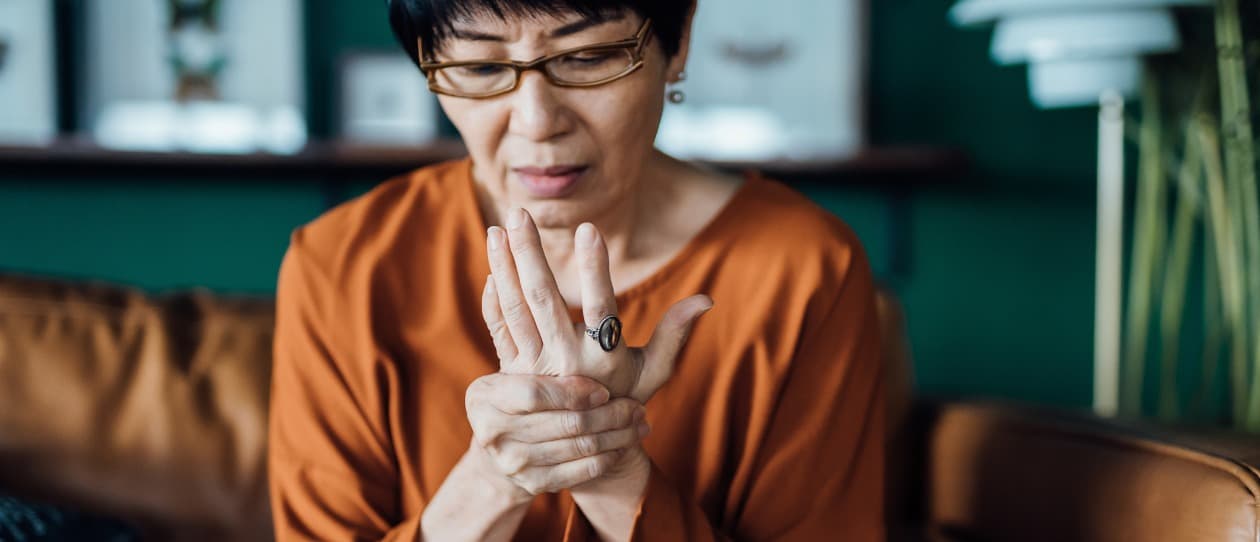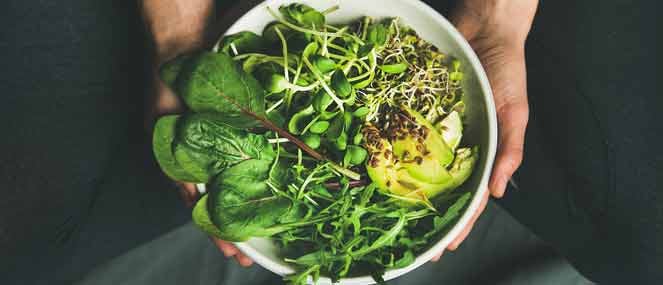
- Health hub/
- Arthritis, joint, bone & muscle/
- The A to Z guide for mild arthritis symptoms


'Arthritis' is the term for a group of conditions that cause damage to the joints, usually resulting in pain and stiffness.
A joint is where two or more bones meet. Arthritis occurs when these joints become inflamed, which can be painful and cause discomfort. The many causes of arthritis are not known. Some can be inherited genetically, caused by immune system problems, or by a metabolic condition known as gout.
Environmental factors include:
- Carrying excess weight, increasing strain on the joints
- Repetitive movements of particular joints
- Previous injury to a joint, such as from a sports injury
Here is an A to Z on various aspects of arthritis to increase your understanding of the management of arthritis.
Acupuncture
An alternative therapy, acupuncture uses needles to stimulate and free blocked energy from the meridians in the body. When there are blockages or an imbalance in energy flow in the body, this can result in illness or pain.
The meridians are 20 invisible channels in the body where our life energy, called qi, flows. Research is limited and not conclusive. However, it might be worth trying to see if it might work for you. Seek a trained and experienced practitioner and consult your GP before trying.
Balance
Improve your balance through regular physical activity, including strength training. Yoga includes helpful balancing poses to build strength and improve your balance.
Cure
Treatments can only control symptoms, but there currently is no cure for most forms of arthritis.
Diet
There is no diet proven to cure arthritis. However, following a balanced diet, such as the Australian Dietary Guidelines, will ensure you reach and maintain a healthy weight to reduce your risk of other health problems.
Exercise
Arthritis Foundation says exercise is the best treatment for arthritis, as research has found. It can improve mobility and flexibility of joints, muscle strength, posture, and balance. It can decrease pain, fatigue, muscle tension, and stress and improve overall health.
Falls
The Arthritis Foundation reports that people with arthritis face a higher likelihood of falling or experiencing new fractures. The most significant hazard is the bathroom. The Foundation has a range of tips for staying safe at home by making modifications such as:
- An adjustable bench next to the bath to help you get in and out.
- Slip mats in the bathtub, bathroom, and toilet floors
- Install a sensor light, or buy a touch light so you can go to the bathroom at night safely
- A seat in the shower
- Install grab bars by the tub, shower, and toilet
Gout
Gout is one type of arthritis. The Arthritis Foundation explains that it is caused by tiny and painful crystals form in and around the joint. These crystals are made of uric acid, the body's waste product that the body rids itself of through the kidneys into the urine. However, this process is slower in people with gout, causing crystals of uric acid levels to form and accumulate in the joints, resulting in intense bouts of pain.
Home modifications
Falls are preventable, and here are some steps you can take as recommended by the Arthritis Foundation:
- Eliminate tripping hazards in the home by minimising the amount of clutter.
- Keep your home well-lit, for example, by keeping common pathways illuminated with night lights.
- Modify the home, such as ensuring staircases have railings.
- Use a cane or other assistive device if needed.
- Get assessed for your fall risk if you have fallen twice or more in the past year, if you've needed medical care for a fall or if you feel unsteady on your feet.
Injury
Arthritis Australia discusses on their website, how to determine whether your sore joints could be due to arthritis, speak to your doctor, especially if it starts without apparent reason, comes on with swelling and redness, and lasts for more than a few days.
Living with arthritis
You can live well with arthritis and Arthritis Australia provides the following steps:
- Learn which type of arthritis you have and their treatment options
- Stay active: Keep your joints moving and your muscles strong
- Learn ways to manage pain
- Balance out your activities with rest
- Keep to a healthy weight
- Look into getting some home aids or equipment that can help you perform day to day tasks
- Seek support for any overwhelming feeling you may be having because of your arthritis
Mediterranean diet
Dietitians often view this diet favourably due to its anti-inflammatory and disease fighting powers.
Nature of symptoms
Understanding your joint symptoms will help your doctor diagnose to see if it is arthritis or something else. Monitor your symptoms for a few weeks, noting what causes pain, where it's swollen and stiff, when, for how long, and what helps ease the symptoms.
Osteoarthritis
Osteoarthritis affects the whole joint. Though it used to be known as "wear and tear,' it is now known to be the result of a joint working hard to repair itself.
Pain management
Try the following to manage pain from arthritis:
- Medicines: Speak to your doctor or pharmacist about which medicines may suit you and how best to take them.
- Exercise: There is research to show that engaging in regular physical activity can help reduce pain. Talk to your specialist or doctor about which may work best for you.
- Heat and cold therapies: Methods such as warm baths, heat packs, and hot water bottles applied to the affected area for 15 minutes can help to relax muscles and stimulate blood circulation. Cold therapies such as ice can numb the pain and reduce swelling.
If unsure, discuss with your health professional which method best suits your condition. Avoid engaging in activities that cause pain, get some help from someone else, and use special aids to help with performing specific tasks.
Massage:
Limited research shows massage may help temporarily relieve muscle and joint pain. Ideally, you should find a massage therapist with experience working with people who have arthritis.
Acupuncture
See 'Acupuncture.'
Relaxation
Try relaxation techniques, such as deep breathing, meditation, guided mental imagery, and progressive muscle relaxation, to help you reduce stress and muscle tension. There are apps, CDs, and books to help you learn relaxation techniques, or you could seek help from a trained professional, such as a psychologist.
Rheumatism
Rheumatism was a general term for bone, muscle, and joint pain. Instead, back pain, tendonitis, and arthritis describe bone, muscle, and joint conditions.
Statistics
Arthritis Australia reports that arthritis can affect children and young people. In Australia, one in six has it, and two out of three people with arthritis are between 15-60 years old.
Transcutaneous electrical nerve stimulation (TENS) machine
A TENS machine can block pain messages from the affected area to the brain. It does this by applying very mild electric pulses. Its effectiveness can vary between people, so it's best to try a TENS machine through your health professional such as a physiotherapist.
Understand the type of arthritis
Understanding what type of arthritis you have and the best ways to improve your condition may help give you back a feeling of control over your life and health.
Weight
Extra body weight increases the stress on your joints, where the damage and pain occur in arthritis. According to the Arthritis Foundation Australia, there is a clear link between being overweight and an increased risk of developing osteoarthritis. Losing weight will decrease the stress on your joints, reduce pain and make it easier for you to move around.
X-rays
It may take several visits before a doctor can determine which type of arthritis you have, as an x-ray can come back normal in the early stages. The doctor may send you to a specialist, such as a rheumatologist, for further testing. A rheumatologist is a doctor specialising in arthritis.




